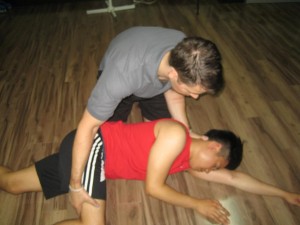Overview Of A Slipped Disc
A herniated disc or a prolapsed disc is often referred to as a slipped disc. This problem occurs when the disc that sits between the bones of the spine, is damaged and then begins to press on the nerves in the spine. This can cause back pain, along with neck pain. The person may even experience numbness, weakness in the other areas of the body, as well as a tingling sensation. In many cases, the sciatic nerve is often affected. This can cause pain in the back of the pelvis through the legs into the feet. This can also cause pain in the hips and buttocks.
Understanding the Spine

In the spine, there are 24 individual bones that are stacked on top of each other, known as the vertebrae. In between each vertebra are cartilage known as discs. The discs are what helps a person to maintain flexibility and movement. The entire spinal cord is very sensitive and contains numerous nerves and nerve fibres that connect to the brain.
Causes of A Slipped Disc
There are several reasons why a disc may slip. When a disc slips it results in the cartilage, which has the gel-like substance, bulging out of the disc. This can put pressure on the spinal cord or just a single nerve. Thus, it can cause pain throughout the entire body. The reasons that these slipped discs happen are numerous, however some of the reasons include:
- Age, usually to those who are 30 to 50 years’ old
- Smoking
- Injury to the spine
- Twice as many men are affected as women
Of course, there are veracious others ways in which this can happen, but these are the most common.
Diagnosis
A doctor can look at your medical history and symptoms then carry out an exam that will measure your reflexes, posture, strength, walking ability and the sensation in your limbs. Often, they will perform x-rays to see if they see this slipped disc.
Treating A Slipped Disc
It can take between four and six weeks to make a full recovery. Treatment generally includes a mixture of physical rehabilitation, such as reflexology and workouts, and medicine to dismiss the pain.
Surgery to relief the compacted nerve and eliminate a portion of the disc might be deliberated in severe circumstances, or if the pain lasts for more than six weeks.
In several instances, a slipped disc will usually shrivel back away from the nerve and the discomfort will get better as the disc stops pinching on the affected nerve.
